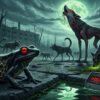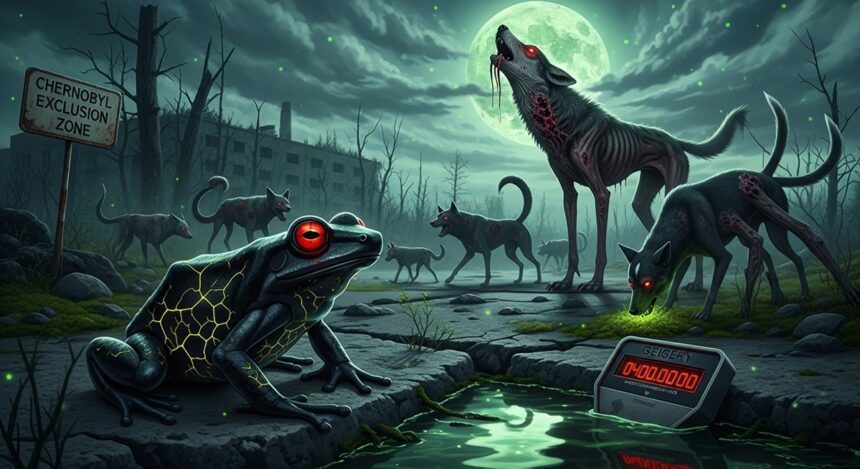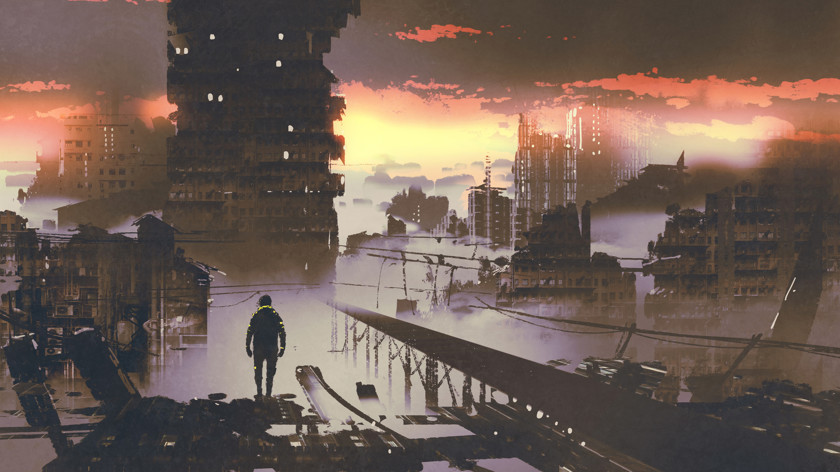On April 26, 1986, at 01:23:45 AM, the fourth power unit of the Chernobyl nuclear power plant detonated, an event that unleashed an amount of radioactive substance into the atmosphere 400 times greater than the bombing of Hiroshima. The world watched in horror as the 30-kilometer exclusion zone was sealed, instantly becoming synonymous with barren, uninhabitable death.
That was the human perspective. We assumed the land was dead, sterilized, a monument to our technological hubris.
Thirty-nine years later, scientists returning to this desolate landscape have discovered something infinitely more profound and terrifying than a wasteland: they found a crucible. They found that life did not just cling to existence; it accelerated. Under the extreme, unforgiving pressure of ionizing radiation, evolution—which usually operates on geological timescales—was compressed into a few furious decades.
Frogs have turned black across ten generations. Wolves are exhibiting cancer resistance. Dogs possess unique, divergent DNA found nowhere else. Chernobyl is not a dead zone; it is the planet’s most vicious, vibrant evolutionary laboratory, created not by design, but by human error. Welcome to the Genesis Zone, where nature is rewriting its own code.
The Relentless Filter: Accelerated Evolution Under Pressure
When people retreated from the exclusion zone, nature aggressively reclaimed its territory. But the nature that returned was fundamentally altered. A group of Spanish biologists from the University of Oviedo quantified this shift, revealing rates of change that defy conventional biology. They found that evolution in the Chernobyl environment was accelerated: frogs at double the usual rate, voles at 55% faster, and dogs at an astonishing 80% faster.
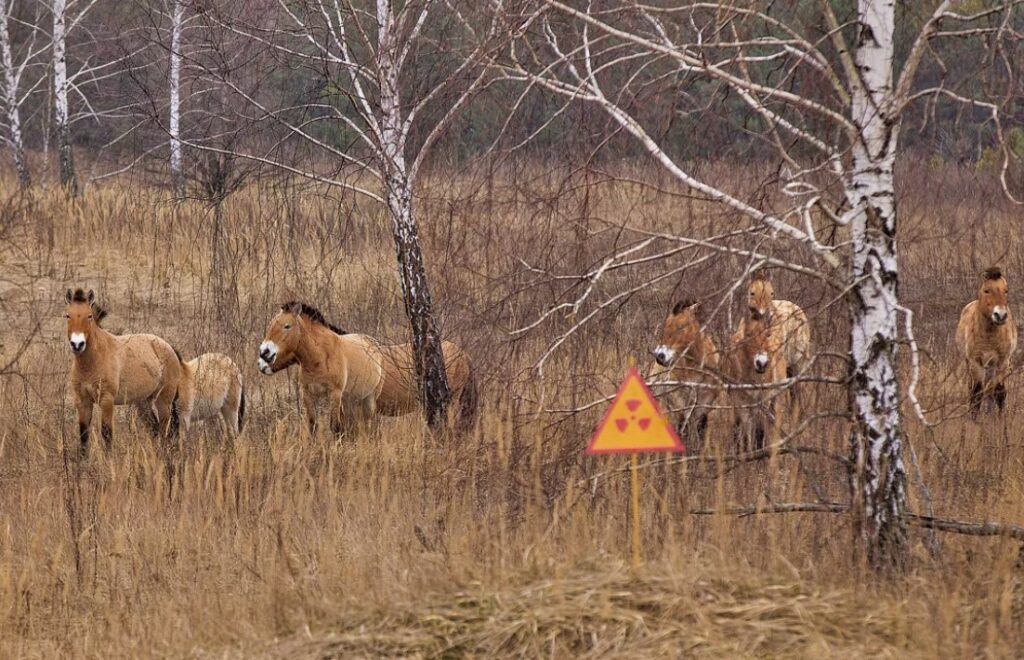
This phenomenon is termed accelerated evolution under environmental pressure. The relentless, mutagenic stress of radiation created the most extreme selective filter imaginable. Only those few individuals who developed the “correct” mutations—those that conferred immediate, vital protection—survived and reproduced. The vast majority of weak or unlucky organisms simply perished. Survival became a zero-sum game dictated by genetic luck.
Ninja Frogs: The Melanin Armor
One of the most visually striking and rapid adaptations occurred in the Eastern tree frogs (Hyla orientalis). Across ten generations—a mere 40 years—the population of these normally bright green amphibians in the zone turned completely black.
This dramatic shift is a clear example of survival driven by biological necessity. Melanin, the dark pigment, is not merely a color; it functions as a biological armor against radiation. Melanin absorbs and neutralizes ionizing radiation, effectively shielding the cell DNA from catastrophic damage. In the contaminated environment, the dark frogs enjoyed a survival rate many times higher than their light-skinned counterparts.

For comparison, environmental skin darkening in nature typically requires at least $500$ to $1000$ years to take hold. In Chernobyl, it took 40 years. Even more remarkable is the sheer speed of consolidation: the black-color mutation spread five times faster than it would under normal conditions. This is the simple, brutal arithmetic of natural selection: light frogs died faster, dark frogs lived and multiplied.
The Genetic Revolution: Canis Sapiens and the Cancer-Proof Wolf
The most profound, and potentially most valuable, discoveries are found in the mammals that roam the radioactive forests, particularly the canids. Their evolutionary leaps offer a terrifying glimpse into what life can achieve when pushed to the breaking point.
The Wolves Who Beat the Reaper
In 2014, Princeton University biologists began studying the wolves of Chernobyl, fitting them with GPS collars and radiation dosimeters. The data was nothing short of sensational. The Chernobyl wolves consistently receive a radiation dose that is six times higher than the safe limit for humans—a cumulative dosage that, in human beings, would sharply increase the risk of lethal cancers, destroying cells and unraveling DNA.
Yet, these wolves do not get cancer. At all.
Genetic analysis revealed that their immune system has undergone an evolutionary mutation, becoming genetically similar to the immune systems of human cancer patients undergoing radiation therapy. But for the wolves, this is not the result of treatment; it is a genetic feature that has become entrenched.
Scientists identified specific regions of the wolf genome that exhibit resistance to cancer. These genes are responsible for the hyper-efficient repair of damaged DNA, the aggressive inhibition of tumor growth, and an enhanced immune response that aggressively targets cancer cells. These wolves are living biological defenses against the very scourge of the modern world. If scientists can understand exactly which mutations protect the wolves, they may have found the key to fighting human cancer, leading to the potential development of a drug based on the resilience of the Chernobyl wolf.
The Dogs of the Divide
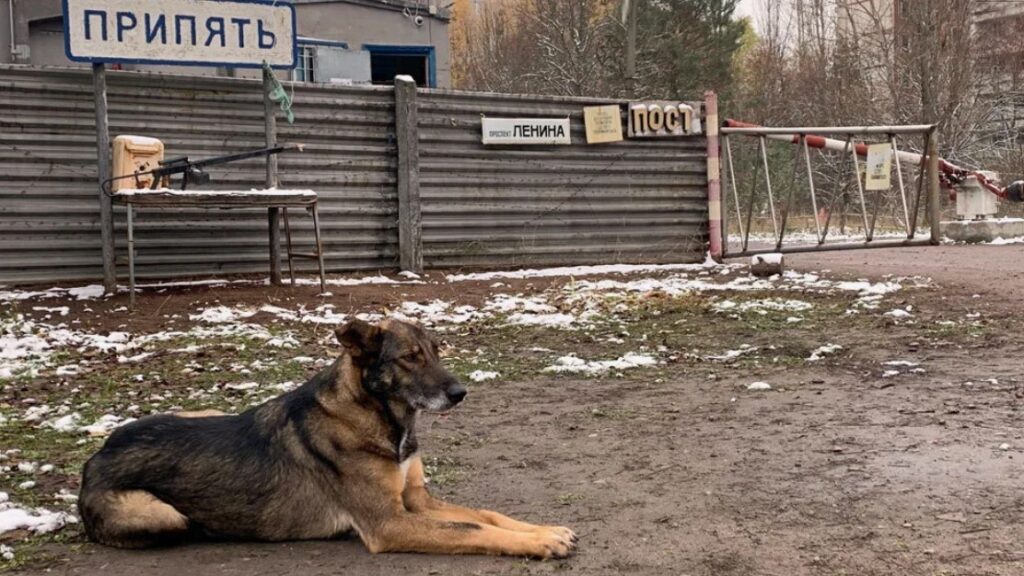
Many of these novel sites relate to enhanced immunity, accelerated DNA repair, and superior stress resistance. But the strangest revelation lies in their divergence. Dogs living near the abandoned city of Chernobyl (only 16 kilometers from the plant) have already become genetically different populations from those living immediately near the station itself.
The common mongrels of Chernobyl—descendants of the pets abandoned in 1986—are outwardly ordinary but are undergoing a silent genetic revolution. Between 2014 and 2024, DNA tests conducted on over 300 dogs in the zone revealed 391 unique regions of the genome not present in any other dog population globally.
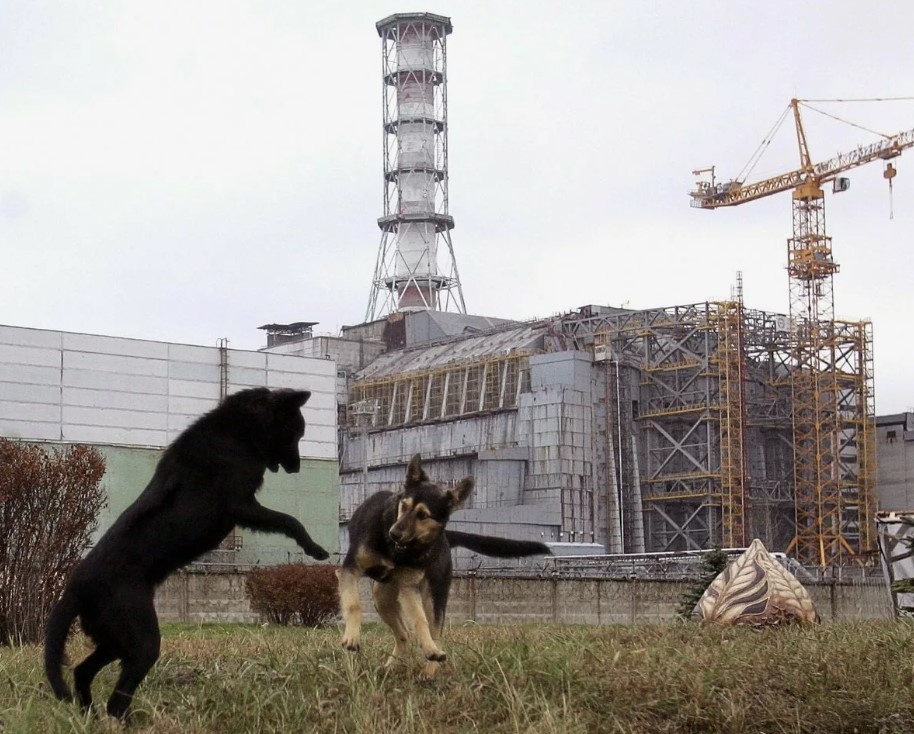
Ecologist Ilya Rybalchenko notes that radiation acts as the “most severe filter.” The weaker animals die, and only those with the “right” mutations survive, solidifying these mutations rapidly. In 39 years, two populations of common dogs, separated by a trivial distance, have diverged so profoundly that they are on the path to becoming different subspecies. This biological isolation and accelerated divergence is a living case study that defies all conventional evolutionary timelines.
The Paradox of Protection: From Immortality to Intoxication
The most mysterious discoveries involve organisms at the opposite end of the biological scale, highlighting the complex, unpredictable nature of evolutionary adaptation.
The Worms Who Never Noticed
Scientists expected to find DNA damage, short lifespans, and reproduction problems in nematodes—tiny, millimeter-long worms—taken from the most contaminated areas. Instead, they found nothing. The worms were genetically indistinguishable from those in uncontaminated areas, showing no damage, no mutations, and thriving effortlessly.
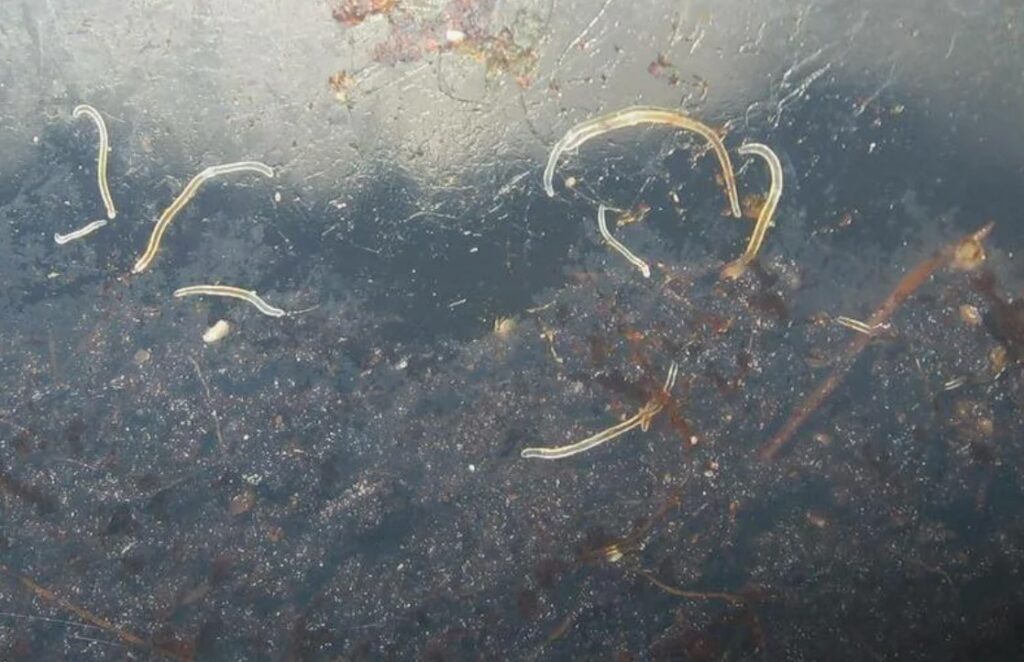
Two competing hypotheses emerge: either these nematodes possessed an inherent, unsuspected resistance to radiation from the beginning, or their life cycle is so short—living only a few weeks—that thousands of generations have passed in 39 years, allowing evolution to completely “filter out” all susceptible individuals. The fact remains: in a zone where a human would not survive, these tiny worms thrive, displaying an accidental biological immortality.
Birds with a Built-in First Aid Kit
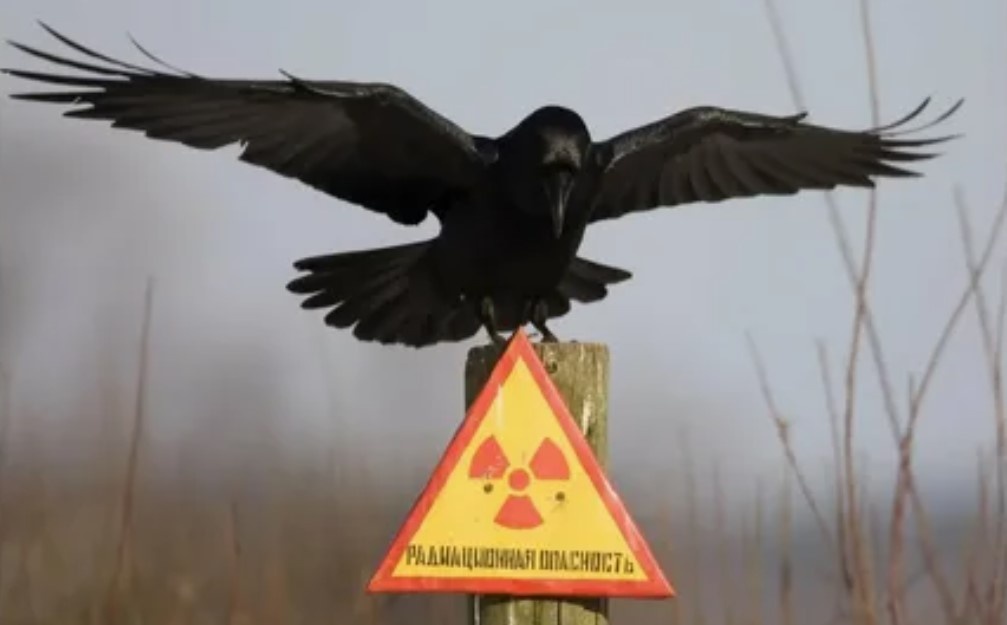
Even the birds—swallows and sparrows—have changed. A 2014 international study found that birds from highly infected areas were in better condition than their “clean” relatives. Their bodies exhibited an increased level of antioxidants, substances that aggressively neutralize the free radicals which are the primary source of cell damage during irradiation. Nature has effectively installed a built-in first aid kit that constantly heals the damage, genetically rewriting the operational instructions for these avian species.
The Drunken Forest
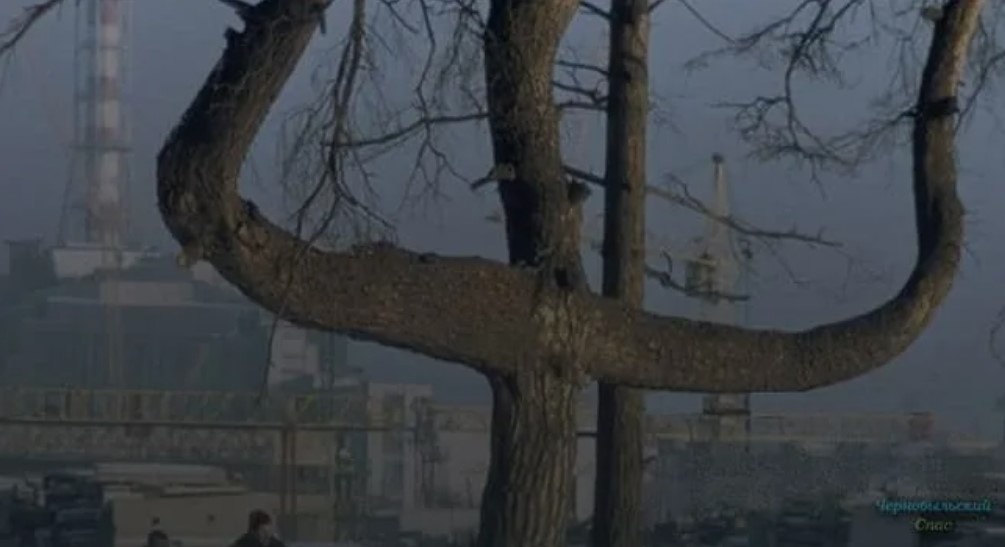
The story of the flora is more ambiguous. The pine trees in the zone became twisted and gnarled, the notorious “drunken forest” where trunks bend at strange angles. Food crops suffered developmental delays. Yet, the small experimental plant Arabidopsis, when cultivated from Chernobyl seeds, showed a significantly increased resistance to mutagens. These plants were better at repairing DNA than their “pure” counterparts, exhibiting changes in DNA methylation—an epigenetic mechanism that allows for quick adaptation to stress by switching genes on and off without changing the underlying DNA code.
The Cruel Lesson: Humanity is the True Predator
It is vital to temper these astonishing discoveries with the terrible truth: radiation kills. Not every animal became a superhero. In the initial years, the zone saw horrific negative mutations: piglets with two heads, calves without eyes, and pets with extra limbs. This was the period of cruel natural selection, where thousands died in the early days. We only study the survivors—a classic survivor’s fallacy. Only those who received beneficial mutations survived, and their genes were quickly locked into the population.
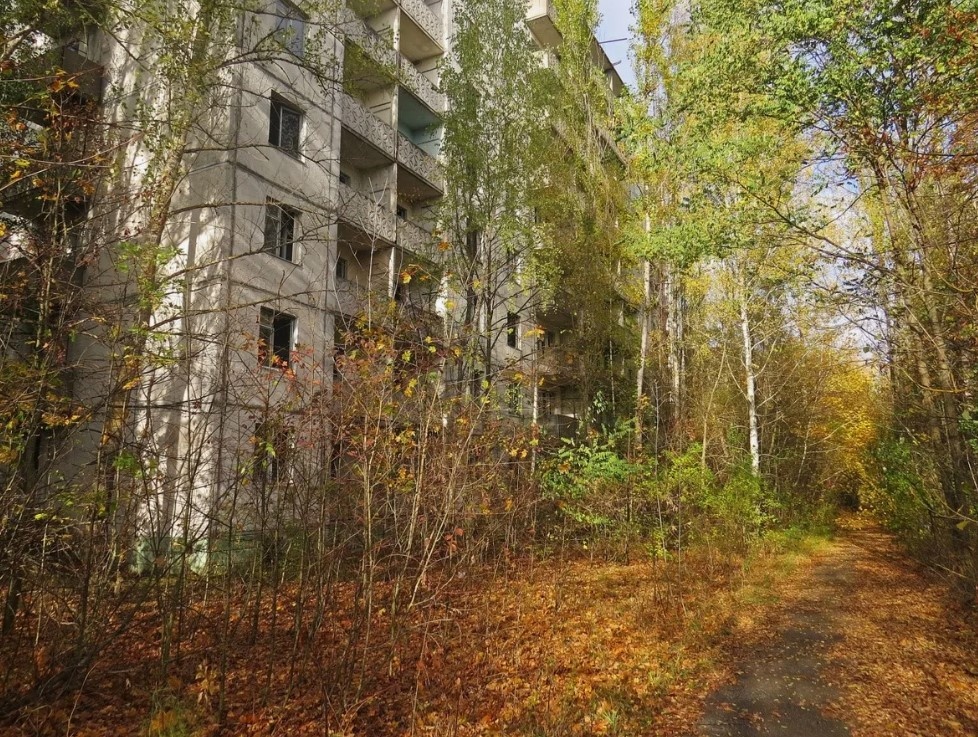
Despite this initial slaughter, a profound paradox has taken root: the exclusion zone has become a thriving wildlife reserve. With the absence of the single most destructive force—humans—species that had been absent for a century returned: bears, lynxes, eagles, and booming populations of wolves and imported bison.
This is the central, cruel lesson of Chernobyl: for wildlife, the long-term presence of humanity is far more dangerous than radiation.
The Future of the Genesis Gene
Thirty-nine years on, the radioactive background in most of the zone has returned to pre-accident levels, yet the animals remain genetically altered. Their mutations are fixed in their DNA, inherited by their descendants. The Chernobyl wolves, dogs, and frogs are now genetically distinct populations.
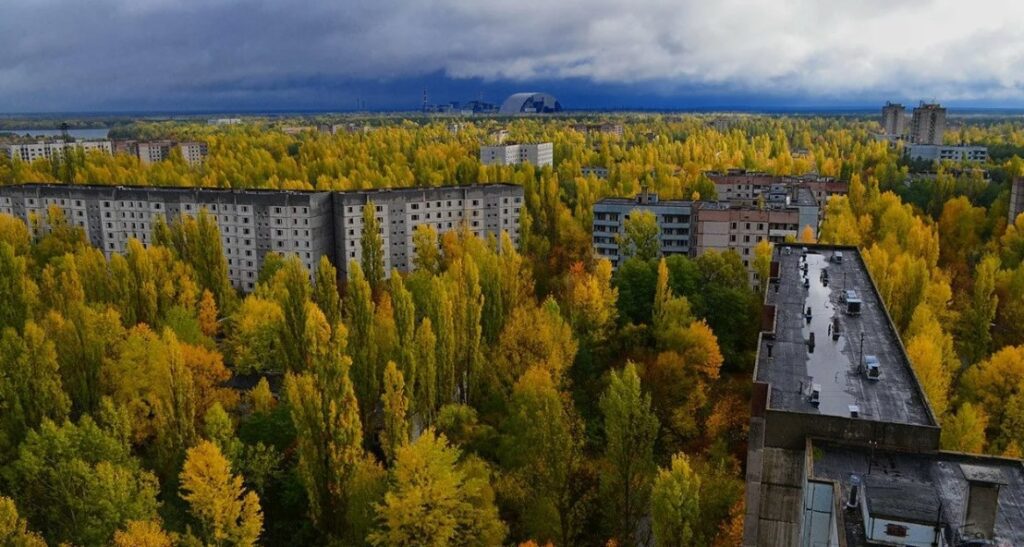
Scientists continue their research, driven by the knowledge that this laboratory offers immense potential for human benefit. The cancer resistance of the wolves could lead to cures for humans. The protection mechanisms in the birds and plants could create radiation protection for astronauts, pilots, and medical workers, and engineer resilient crops for extreme environments, potentially aiding the colonization of Mars.
Chernobyl is not just a tragedy we escaped; it is a giant, unwitting laboratory where life itself is the main experimenter, forging new biological possibilities in the fires of human error. The question now is whether humanity is ethical or courageous enough to harness the terrifying, beautiful wisdom forged in the Genesis Zone.


